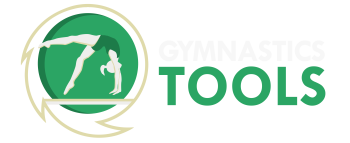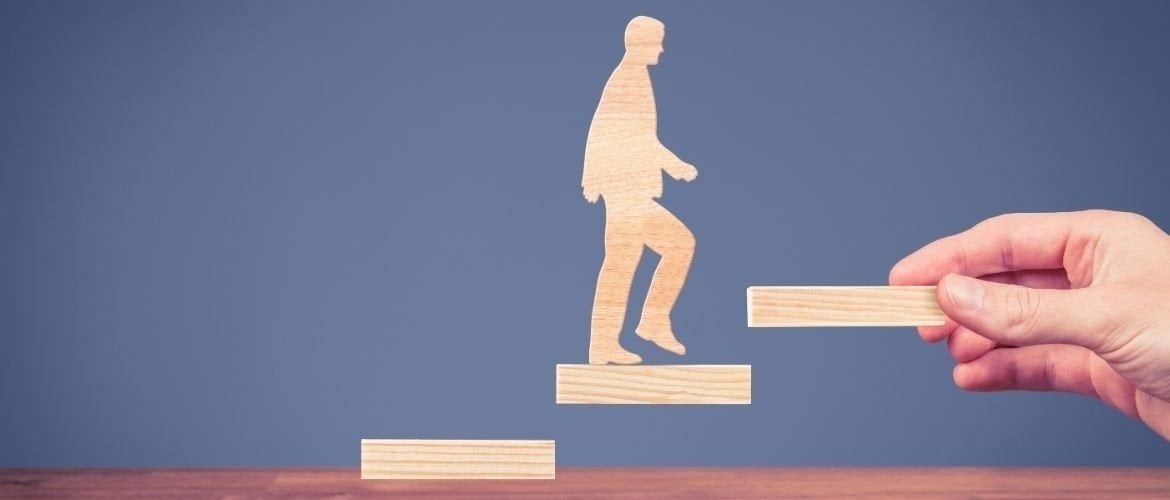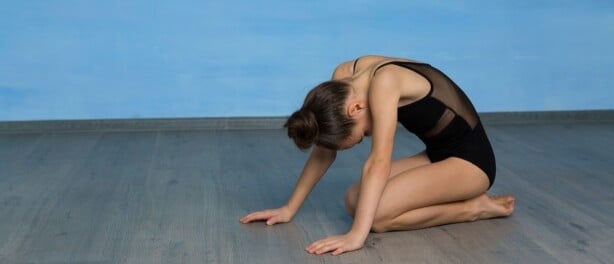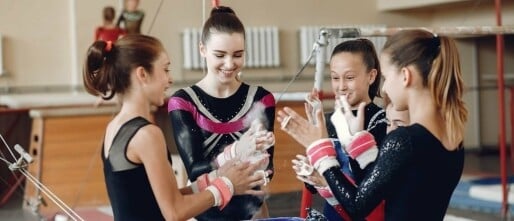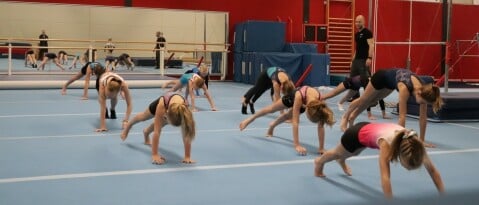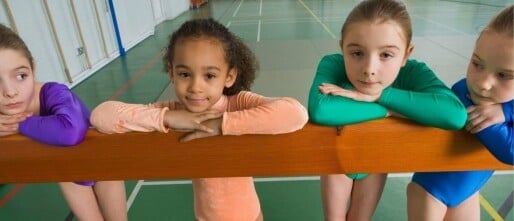Gymnastics coaching is a skill in itself. I have often asked myself what makes a gymnastics coach ”good”. What mindset do you need for this? And what qualities does a ”good” coach possess? What actions does a ”good” coach perform, and what actions does he or she not perform? These questions kept haunting my mind, especially in the days when I was still giving many lessons myself. I wanted to coach my gymnasts in the best possible way and teach them gymnastics. In addition, I wanted to be conscious of my gymnastics coaching skills. As a gymnastics coach, you have an important role in the development of a child. I wanted to fulfil this role as well as possible.
I searched the internet for answers to the above questions.
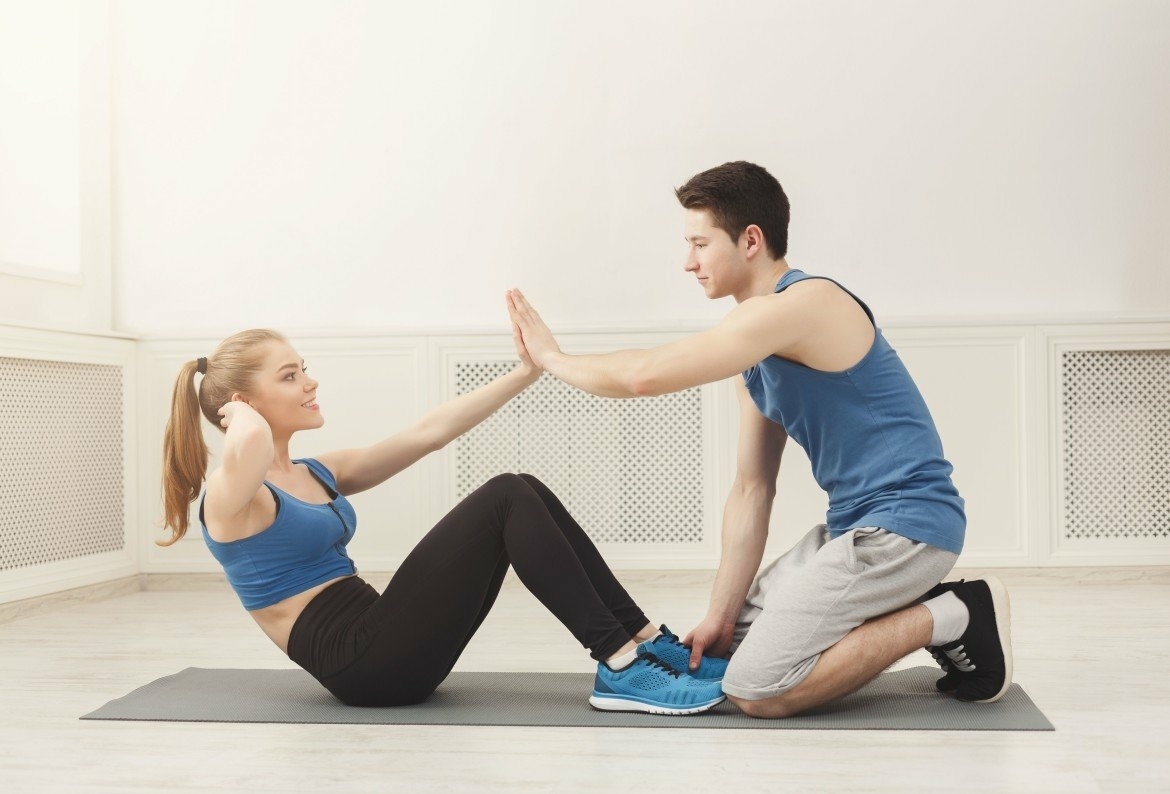
1. Developing your own gymnastics coaching philosophy
First of all, I read about developing your own gymnastics coaching philosophy or mindset as a gymnastics coach. It is important to have your own basic principles clear that include your standards and values. Try to pursue these consciously. For me as a gymnastics coach, I had a number of main goals during my gymnastics lessons. My main goals were: fun in the lessons, instructive lessons and a friendly, close-knit group.
To find out what was really important to me during gymnastics coaching, I asked myself the following questions:
- What do I want to teach my gymnasts?
- Which things do I need from the group?
- What gives me energy?
- How do I want to be treated?
- What do I want above all?
- Which behaviour do I not accept?
- What is respect? How do I create mutual respect?
- Where and what am I looking for in gymnastics coaching?
- What qualities do I see in fellow coaches?
Once I had the answers to these questions clear, I set myself three ground rules that apply in my lessons. Three to five ground rules is compact and clear.
I tried to actively pursue my goals, but at some point I began to doubt whether my main goals were being achieved. Therefore, I decided to check this by having my gymnastics group fill out a survey. I asked questions about the quality of my gymnastics coaching skills, the curriculum of my lessons, and the group dynamics. It is very important to ask for feedback on your actions, from your group or people around you such as other coaches.
2. Communicate while gymnastics coaching
How do you communicate as a gymnastics coach? How do you communicate verbally, and how do you communicate non-verbally when you are in the gym? Do you tend to play policeman, telling what is allowed and what is not, or do you leave it all more open? Tell what you do want, your ground rules that belong to your gymnastics coaching philosophy and don’t be too punitive.
Do you recognise yourself in one of these four gymnastics coaching stereotypes
The pessimist- Tends to think negatively in the face of adversity. Cautious about control, likes to stay “in the know” and go for the safe. Is precise and has an eye for detail.
The menace – If something doesn’t work out the way ”the threatener wants”, he/she tends to threaten. Does everything he can to achieve his goals.
The Embarrassing- Sets high standards and works in a structured and disciplined way to achieve goals. Likes hard workers.
The Violent – Thinks more of himself. Wants to be accepted by others and therefore behaves attentively, openly and optimistically.
3. The gymnastics coaching styles
Another classification is the way you give instructions. We can distinguish four gymnastics coaching styles:
The mentor – conveying wisdom such as life or work experiences to create (new) insights.
”What helped me a lot with the flick was the focus on ”holding a coin between the ankles” to do the flick with closed legs.”
The teacher – sharing new information
According to the evidence, stretching just before training does not improve your strength.
The transformation – holding up a mirror in order to find answers and/or solutions for yourself.
‘’ Gymnastics coach: Let’s film your cartwheel. What do you see happening?
Pupil: ”My legs are going to be bent and I am making it very small”.
Gymnastics coach: I agree. How could you improve that?
Pupil: ”I must focus on extending my legs and making them long to the ceiling. I can make a big stride and place my hands further away ”like I have to step over a ditch” to make the cartwheel bigger.
Gymnastics coach: That sounds like a good focus. As an extra tip, you can try doing the cartwheel between two blocks. Then you are even more forced to stretch your legs when you don’t want to hit the mat.
Pupil: ”I’m going to work on that!”
The result-oriented
The emphasis is on achieving results. You stimulate and help to set goals and achieve them.
I will get the target schedule for beam. Julie, you were doing the loose roll. Hannah, now that the cartwheel has been going steady for a fortnight, I suggest you start with the arabic. What do you think of that?”
The solution-focused
Not starting from a problem, but finding solutions and working on them.
Coach: The back roll is not very stable yet, I understand that you find it difficult to perform it on the beam.
Myrthe: That’s right, it frustrates me enormously. The rest of my beam exercises are going so well, and with that stupid element I get so many deductions when it doesn’t work again.
Coach: What if you do another acro element so that you can do a stable beam exercise? I think a cartwheel would suit you better. Take the bar wraparound and start with the cartwheel.
Myrthe: Yes, that seems like a good plan!
The proactive
Stimulates and challenges by actively taking action. Looks for solutions quickly and prevents. Uses a lot of initiative and self-direction.
”We don’t have the right materials in this gym for that tipping station. Besides, I can’t catch a whole training session by myself and we don’t have an assistant who can help me catch. So let me build a tipping station myself. I will provide a PVC tube and a rope, which we can tie to the bridge to practise the kip swing. That way, I can stand at other parts and we can still practise that part of the kip.”
4. What do you want to teach your group?
What do you have to do to teach your pupils element x as effectively as possible, or to learn to deal with competition tension as well as possible? Besides the fact that you want to teach your group something physical, such as gymnastics elements, there are also mental learning points involved. What I sometimes found very difficult was the guidance towards a competition. How do you deal with winning/losing or successes and failures?
5. Setting goals as a coach
Set goals for yourself about what you want to teach your group. Also make your group aware of the goal/success you are striving for. Often gymnasts only have the gold medal in mind, which stands for “success”. Often the personal successes are more realistic and worth more. For example, daring to perform element x in the competition exercise, performing a whole competition at all or finishing two places higher than the previous competition.
The danger is that if you do not express these goals and expectations, gymnasts think that the main goal is “the gold medal” and forget about their personal goal. They will “fail” if they do not achieve their gold medal and develop a negative association with competitions. Competitions should be motivating and teach many lessons for personal development. You as a coach must monitor and guide this.
Set both physical and mental goals. Then ask yourself what the plan of action will be to achieve the goal.
6. Example situation
Suzanne finds it very difficult to make mistakes. When the loose roll fails for the fourth time, she gives up and runs to the dressing room crying. What a rotten routine, I will never manage it”. With a lot of resistance she returns to the beam.
A goal of the coach could be to teach Suzanne to deal with moments of failure. She does not have to win the gold medal on beam, but doing the loose roll at all during practice or a competition could be quite a victory.
Goal: Within one month, Suzanne will be doing the loose roll on beam independently without letting her emotions control her when she is not able to.
A plan of action in this regard may include:
- Investigate why it frustrates Suzanne so much, question her emotions and thoughts and behaviour.
- Motivating and enhancing intrinsic motivation
- Reward
By teaching Suzanne how to deal with moments of failure and gaining experience in enduring the training, she can achieve a personal goal.
7. Pursuing success as a coach
John Wooden developed the pyramid of success. He described all the aspects that serve as a foundation for team and gymnastics coach to achieve success/goals. His vision is that it’s about the journey to success and not the result. I found this a very beautiful vision and I will elaborate on it in a next article (see gymnastics coaching part II: the competition).
Ask for feedback and reflect
As I mentioned in the first point, checking whether you are pursuing your goals or positions is very important. By reflecting on your own actions and attitudes you can, if necessary, make changes to become even better. By learning from your mistakes you can eventually develop further. Or perhaps you will come to realise that you are already doing things in the best possible way.
Ask for feedback from those around you to increase your blind spots. You may not be aware that you are setting your goals too high or you may be underestimating your teaching group.
Unfortunately, there is not just one good gymnastics coaching method. However, it is important to clarify for yourself what you stand for and what principles you consider important and want to apply. Work in a goal-oriented way by setting and pursuing goals. Also check whether you pursue them sufficiently and can also achieve them. In Part II, the building blocks of effective coaching will be discussed further.
8. John Wooden – The difference between winning and success.
What makes a coach a good coach? A famous coach John Wooden wrote his views on what are essential components of gymnastics coaching and the way to achieve success.
John Wooden is a well-known successful basketball coach. He has created the famous ”pyramid of building blocks for success”. His definition of success is that you have fully committed to something.
He lets his players focus on the successes rather than the wins: ”the journey is better than the result”. Whether you then achieve your goal is a second matter. The road to success requires patience and hope. Do everything with the best intentions and full commitment.
9. Three golden gymnastics coaching rules
John’s three golden gymnastics coaching rules are:
- Never be late
- No swearing
- Never criticise a teammate. His vision is that you should not try to be better than someone else, but learn from each other.
I will briefly describe each step of the pyramid, supported by examples from practice. The pyramid assumes that all building blocks together are necessary for a solid foundation to achieve success as a gymnastics coach and athlete. Starting with the bottom building blocks:
10. The bottom layer of building blocks
- Diligence ”success is achieved only through hard work. There is no trick or easy way out to achieve success”.
- Friendship ”strive with the team for camaraderie and respect for each other”.
- Loyalty ”be honest with yourself and with those you accompany”.
- Cooperation: “Focus on what is right to do, not who is right”.
- Enthusiasm ”your energy, fun, drive and dedication will stimulate and inspire others”.
The bottom layer building blocks are mainly based on team sports. Gymnastics is an individual sport, but the ”vibes” of the group in which you train determine the degree of success. I have taught groups in which there was not really a group feeling. I noticed that the gymnasts were less motivated and had less fun doing gymnastics. It cost me as a coach many times more energy to teach this group than groups in which everyone accepted and stimulated each other.
11. The second layer of building blocks
The second layer contains building blocks:
- Self-discipline ”a disciplined team/organisation starts with self-discipline. Be disciplined”
- Alertness ”always be alert and observe. Strive for improvement”.
- Initiate ”make a decision! Often the biggest mistake is not to make a decision”.
- Focus ”stay the course. Try again when the going gets tough; try harder and smarter. Persistent and Relentless”
When I think of this layer, I immediately think of the organisation of gymnastics lessons. Make sure you create structure for your gymnastics group. Create opportunities to work in a focused way and keep to the lesson plans. This ensures that your gymnasts have the opportunity to work towards something, after all, they know where they stand.
When I started with a new group as a coach, I explained to them my three basic rules: be quiet when I am talking, if something is bothering you come to me and speak even if it is about me as a coach, clean up after yourself. As the gymnasts got used to the fixed equipment schedule, it took me very little energy to run the lessons. The gymnasts knew what they could expect from me, and I knew what I could expect from them. This way we could focus on improving their gymnastics skills.
12. The third layer of building blocks
The next layer of building blocks consists of:
- Condition ”though your degree of skill will take you to the top, your personality will keep you there, mentally-morally and physically.”
- Skills ”it matters most what a leader learns after you learn it”.
- Team spirit ”There is no such thing as the best of the team, it is the team. There is no ”me” but ”we”.
13. The top of the pyramid
The top of the pyramid consists of three building blocks. These are associated with “hope” and “patience”. This is the last part of the road to success.
- Self-control ”Be yourself and don’t let good or bad events throw you off balance”.
- Self-confidence ”the strongest foundation of self-confidence is grounded self-confidence. It is not given to you, you have to earn it”.
- Competitive greatness ”perform at your best when it is needed. Every day your best is needed”
Patience is often lacking. You don’t learn that one gymnastics element in one day. Keep your gymnasts focused on this. They are often easily disappointed when something doesn’t work out, they get upset. I’m never going to make it, I’m quitting,” cries gymnast Marie, crying. Her self-confidence diminishes again and again when she refuses to jump the pegasus.
There is no single answer to the question “what makes a coach a good coach”. I can place these building blocks to success among effective gymnastics coaching skills. The most beautiful thought I find is the sentence ”the journey is better than the result”. How often do coaches and gymnasts focus on the medal? They completely forget what they learn every week. This contributes to the pleasure of the gymnastics training and ultimately to a positive learning flow and the road to success. For example, focus more on the learning process of your gymnasts instead of the end result (the competition or the performance of the element). Reward the gymnast’s efforts, i.e. the path she has to follow to achieve success.
On which building blocks do you want to focus more?
Finally
To finish this part of the article, an inspiring video in which John Wooden explains how to bring out the best in yourself as an athlete.
How to become a good coach in gymnastics?
What makes someone a good coach? Ambitious gymnastics coaches in particular sometimes ask themselves this question. Of course, it is very personal what makes someone a good coach. In this part of this blog article, I share with you which competences I find important when giving training sessions.
Enthusiasm & passion
Of course, it all starts with enthusiasm and passion. Most coaches give training because they really enjoy it. And what is remarkable in gymnastics is that gymnastics coaches are often very eager to learn. You see in practice that coaches who are very eager to learn also develop the most.
Didactics
A good coach is didactically very strong. He knows how to deal with classes at the group level. And he is able to apply his actions to the individual within the group. This means that as a gymnastics coach, you have to be able to switch gears a lot. Every gymnast is different, of course, and therefore needs a different approach.
Of course, the way of teaching also differs per lesson group. Because a selection group is very different from a recreation group. And there is also a difference between teaching boys and girls. Stronger coaches are often able to adapt their teaching style to the lesson group and the athletes.
Methodical insight of a good coach
Another characteristic of a good gymnastics coach is having methodical insight. You obviously need to know how to teach a gymnastics element and which steps to use to get to the final goal. Coaches who have a lot of methodical knowledge can often also differentiate much more easily within the lessons.
Creative
It is often great if you have a lot of methodical knowledge. But if you’re not very creative, you can’t do much with that. Because you often have to make do with the materials that are available in your gymnasium/turnout hall. So when you know what exercises you can use, you still have to use your creativity to adapt the set-ups in such a way that they are workable with your own materials.
Analytical ability
Analytical skills are a very important competence for a gymnastics coach. It enables a coach to see very quickly where a mistake is in a gymnastics movement.
Many coaches have difficulty with this. That is, of course, not surprising. Sometimes gymnastic movements go so fast that you cannot see everything at once. Fortunately, as a coach you can easily practice this by watching a lot of movements and videos. And nowadays there are so many apps and programs that can put the movement in slow-motion. Which makes it easier for you as a coach to look at all the technical mistakes in the movements.
Technical knowledge
Technical knowledge often starts with knowing what a turn element looks like and how to teach it. Above all, it is about knowing which technical errors can be found in movements and how to solve them. There is also a difference in what the coaches pay attention to. Gymnastics coaches give a lot of feedback and technical instructions during lessons. In my own opinion, a good coach first considers whether his feedback is really functional. Sometimes, as a coach, we just call out something without considering whether this feedback can actually be implemented.
Give technical instructions as a good coach
Giving technical instructions is also a special skill. When you know what technical mistakes there are, you also have to know how to convey these to a sportsman. Every athlete learns differently. One athlete will pick up on your instructions faster if he sees an example. The other needs to feel what he has to do. And the other will be satisfied with verbal feedback. A good coach knows exactly which approach suits the athlete and is able to switch between the two.
Organisational capability
In practice, you see many differences between coaches who are strong in one-to-one gymnastics coaching and others who teach at the group level. In gymnastics, you often teach several athletes at the same time, so you also need to have organisational skills. Usually, coaches who are strong in organising also get the athletes to move more. Here you usually see a higher lesson intensity. Of course, it is not the case that athletes necessarily learn more at a high intensity. However, they will certainly learn more than in your classes where there is a lot of sitting around.
Safety in the lesson of a good coach
In itself, in gymnastics lessons, it is logical to keep the lesson safe. But safety is about much more than just making sure that no accidents happen. There is also mental safety and physical safety.
If we look at physical safety, a good coach ensures that there are few injuries. Or that injuries are quickly recovered by adjusting the programme to the injuries. In terms of mental safety, the coach ensures a good lesson atmosphere and pays attention to a positive climate.
Dealing with level differences
A challenge in gymnastics is often dealing with level differences. In the lessons you often have many different levels and ages. And when you participate in competitions, you also have to deal with many different levels of competition exercises. Coaches who have a lot of methodical knowledge and are strong organisers can often cope well with the level differences in the lessons.
Evaluate
One of the most important competences for me is the evaluation capacity of a coach. A good coach evaluates his lesson and his actions after a training session. And thinks about how he can adapt this even better for next time. That is why I think a really good coach can never achieve a full 10 in teaching. He/she looks especially at what went well in a lesson and what could be improved in order to create the best learning result for the athletes.
Coaches’ tips
Can you, as a coach, use some tips for your own gymnastics training? Please take a look at the Gymnastics Tools platform or follow one of the (online) Masterclasses. Also check our workouts on our Youtube channel.
I am curious what you think the most important competencies of a gymnastics coach are! Let me know in the comments.
